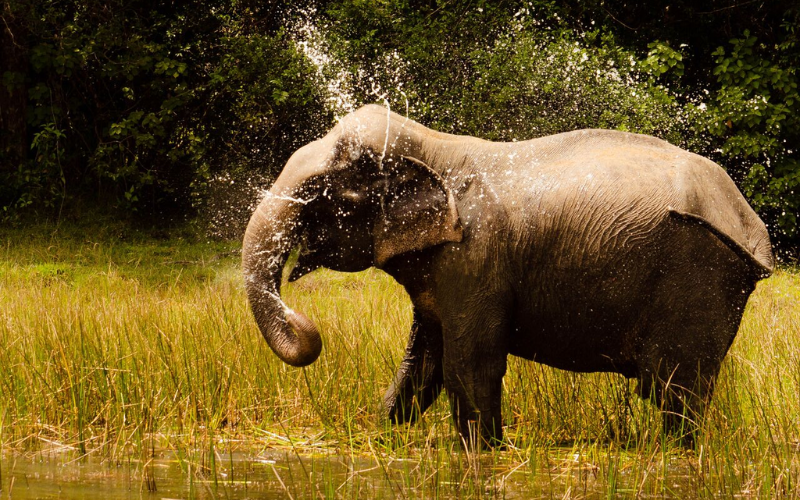The Asiatic elephant (Elephas maximus), one of the world’s most intelligent and charismatic mammals, remains a vital part of Nepal’s natural and cultural heritage. These gentle giants roam the lowland forests and grasslands of the Terai–Churia region, where they are both revered and challenged. Despite their importance to ecosystems and tradition alike, Asiatic elephants in Nepal face mounting threats from habitat loss, human–elephant conflict, and the pressures of rapid development.
Distribution and Habitat
In Nepal, wild elephants are found mainly in the southern plains stretching from east to west. Their key habitats lie within and around the country’s protected areas, including:
In addition, elephants are known to range through Koshi Tappu Wildlife Reserve, Jhapa, Morang, and other adjoining districts. Much of their habitat forms part of the Terai Arc Landscape (TAL) — a transboundary ecological corridor that connects Nepal’s protected areas with those of northern India. This landscape enables elephants to migrate seasonally in search of food, water, and mates, crossing national boundaries freely.
Out of the approximately 20,000 km² of forested area in the Terai–Churia region, about 12,000 km² is considered ecologically suitable for elephants. However, significant portions of this habitat lie outside protected areas, where human settlements and agriculture are expanding rapidly.

Population and Conservation Status
According to the Elephant Conservation Action Plan for Nepal (2025–2035), the country is home to an estimated 230 wild elephants. The population consists of both resident herds and migratory groups that move across the Nepal–India border. In addition, there are around 180 elephants in captivity, used primarily for tourism, patrolling, and ceremonial purposes.
The International Union for Conservation of Nature (IUCN) lists the Asiatic elephant as Endangered, citing severe habitat fragmentation, declining range, and conflict with humans as key threats. In Nepal, the species is protected under the National Parks and Wildlife Conservation Act (1973), which grants it the highest level of legal protection under Schedule I.
Ecological Importance
As ecosystem engineers, elephants play an irreplaceable role in maintaining the health and diversity of forest ecosystems. Their feeding and movement patterns help clear dense undergrowth, disperse seeds over long distances, and create open areas that allow sunlight to reach new vegetation. These activities contribute to forest regeneration, nutrient cycling, and the overall resilience of the Terai’s ecosystems. The presence of elephants often indicates the health of the broader landscape.
Cultural Significance
Elephants hold profound cultural and religious significance in Nepal. They are revered as symbols of strength, wisdom, and prosperity — qualities embodied by the Hindu deity Lord Ganesha, who has the head of an elephant. Historically, elephants were used by royalty for transportation, ceremonial processions, and forest patrols. Even today, they remain an enduring emblem of Nepal’s deep connection to nature and tradition.

Future Prospects
Ensuring the long-term survival of the Asiatic elephant in Nepal will depend on a balanced approach that combines scientific conservation, community engagement, and sustainable development. Protecting migration corridors, restoring degraded forests, and enhancing coexistence with human populations are crucial steps forward.
Climate change, infrastructure expansion, and the growing demand for land continue to pose serious threats. Nevertheless, Nepal’s conservation record — including the success of its rhino and tiger recovery efforts — offers hope that with sustained effort, the future of its elephants can also be secured.
The Asiatic elephant stands as a living symbol of Nepal’s biodiversity and cultural identity. Protecting these giants means more than saving a single species — it represents a commitment to preserving the ecological balance, cultural heritage, and harmony between humans and nature that define the Terai landscape. Through collaboration, compassion, and sound management, Nepal can ensure that the trumpeting of wild elephants continues to echo through its forests for generations to come.
PC: Wikimedia Commons, Animalia
Also Read